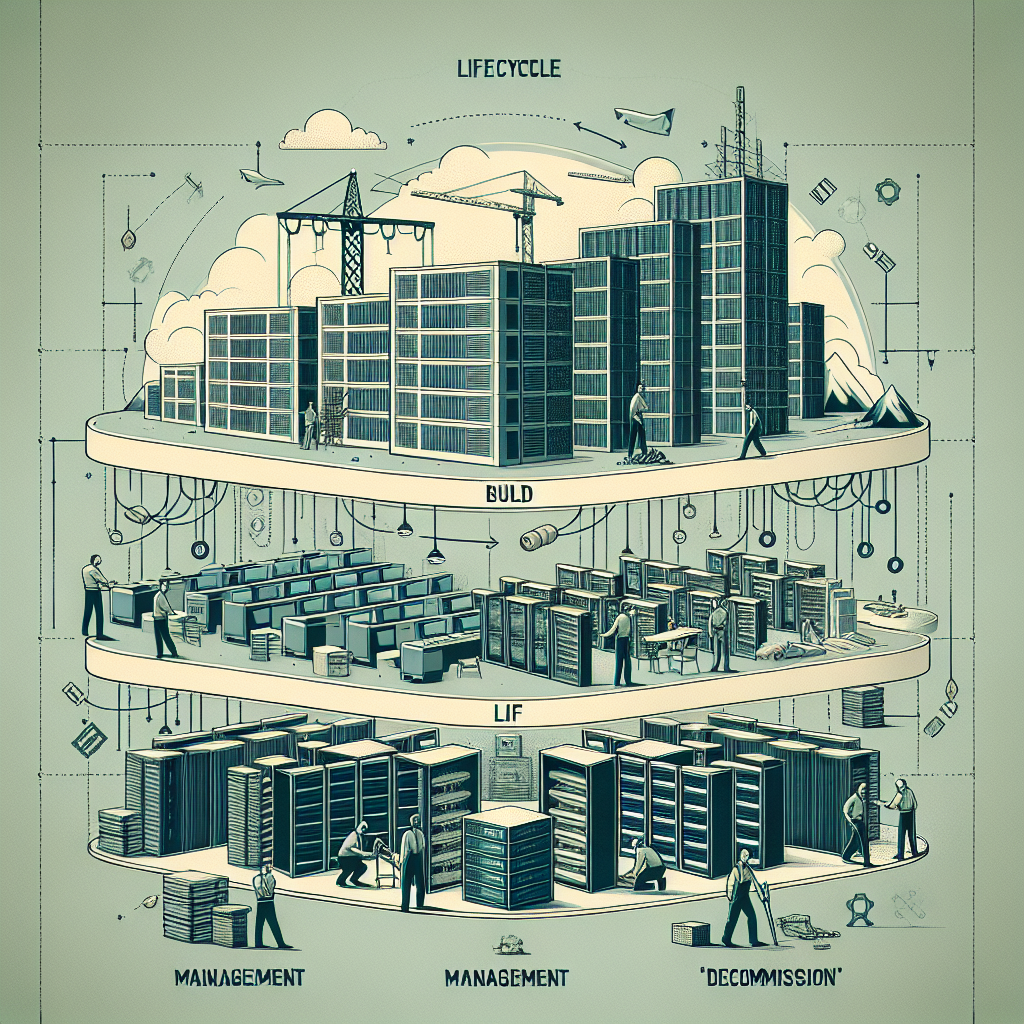Fix today. Protect forever.
Secure your devices with the #1 malware removal and protection software
Data centers are the backbone of modern businesses, housing the critical infrastructure necessary for storing, processing, and managing large volumes of data. However, managing a data center throughout its lifecycle – from initial construction to decommissioning – can be a complex and challenging task. In this comprehensive guide, we will break down the key stages of data center lifecycle management and provide valuable insights and best practices for each phase.
1. Build Phase:
The build phase is the initial stage of data center lifecycle management, where the physical infrastructure of the data center is constructed. This phase involves site selection, design, procurement of equipment, installation, and commissioning. It is crucial to work with experienced professionals, such as architects, engineers, and project managers, to ensure that the data center is designed and built to meet the organization’s current and future needs.
During the build phase, it is important to consider factors such as power and cooling requirements, scalability, redundancy, security, and compliance with industry standards and regulations. Regular site visits and progress updates are essential to monitor the construction process and ensure that the data center is being built according to specifications and timelines.
2. Operation Phase:
Once the data center is built and commissioned, it enters the operation phase, where it is used to store and process data for the organization. During this phase, it is important to establish robust operational processes and procedures to ensure the smooth and efficient running of the data center.
Key activities during the operation phase include monitoring and managing power and cooling systems, maintaining equipment and infrastructure, performing regular audits and assessments, implementing security measures, and ensuring compliance with industry standards and regulations. Regular performance testing and capacity planning are also essential to identify and address any potential issues before they impact the data center’s operations.
3. Maintenance Phase:
The maintenance phase involves regular upkeep and maintenance of the data center’s infrastructure and equipment to ensure optimal performance and reliability. This includes preventive maintenance, such as cleaning, inspections, and tests, as well as reactive maintenance to address any issues or failures that may arise.
It is important to develop a comprehensive maintenance schedule and implement a proactive maintenance strategy to minimize downtime and ensure the longevity of the data center’s equipment. Regular maintenance tasks should be documented and tracked, and any maintenance activities should be performed by trained and qualified personnel to ensure safety and compliance.
4. Decommissioning Phase:
The decommissioning phase marks the end of the data center’s lifecycle, where it is retired and removed from operation. Decommissioning a data center involves safely shutting down systems, removing equipment, and disposing of assets in an environmentally responsible manner.
During the decommissioning phase, it is important to develop a decommissioning plan that outlines the steps and processes for decommissioning the data center, including data migration, equipment disposal, and contract termination. It is also important to work with vendors and service providers to ensure that data is securely erased, equipment is properly recycled or disposed of, and any contractual obligations are fulfilled.
In conclusion, data center lifecycle management is a complex and multifaceted process that requires careful planning, execution, and monitoring at every stage. By following best practices and leveraging the expertise of professionals, organizations can ensure that their data centers are built, operated, maintained, and decommissioned effectively and efficiently.
Fix today. Protect forever.
Secure your devices with the #1 malware removal and protection software

Leave a Reply
You must be logged in to post a comment.